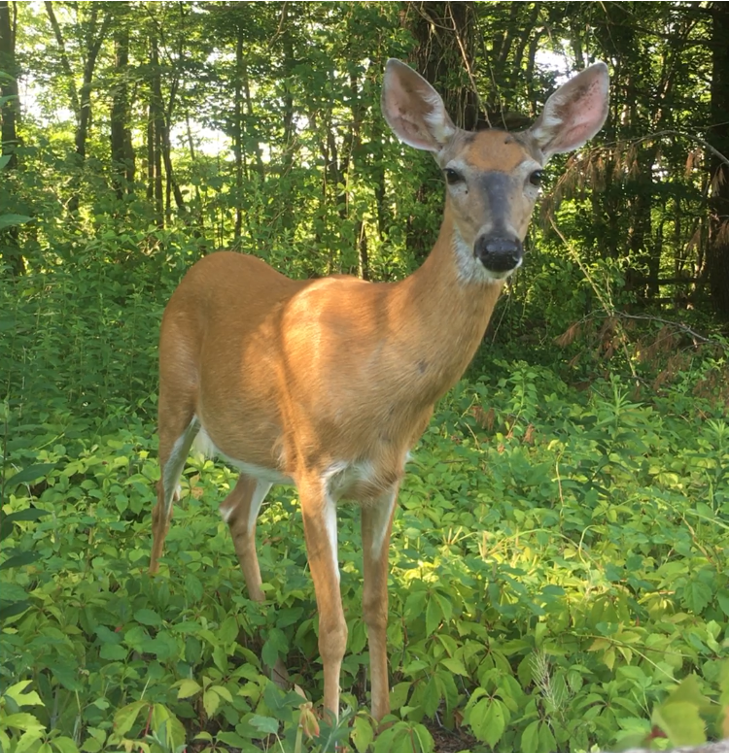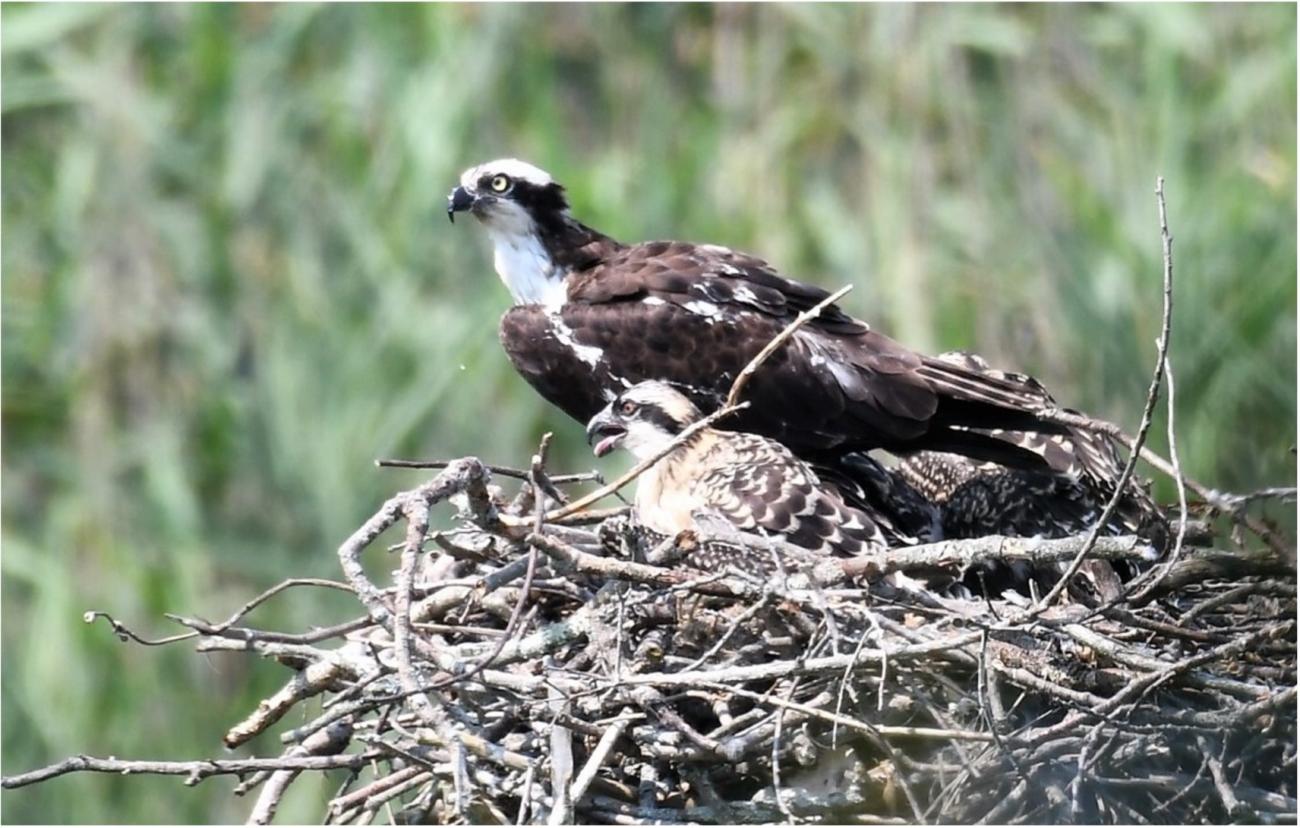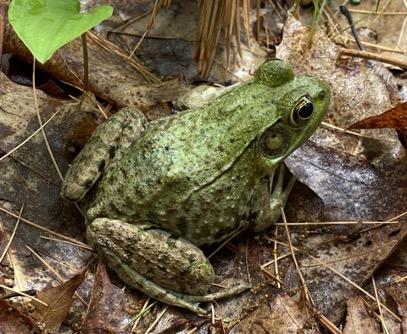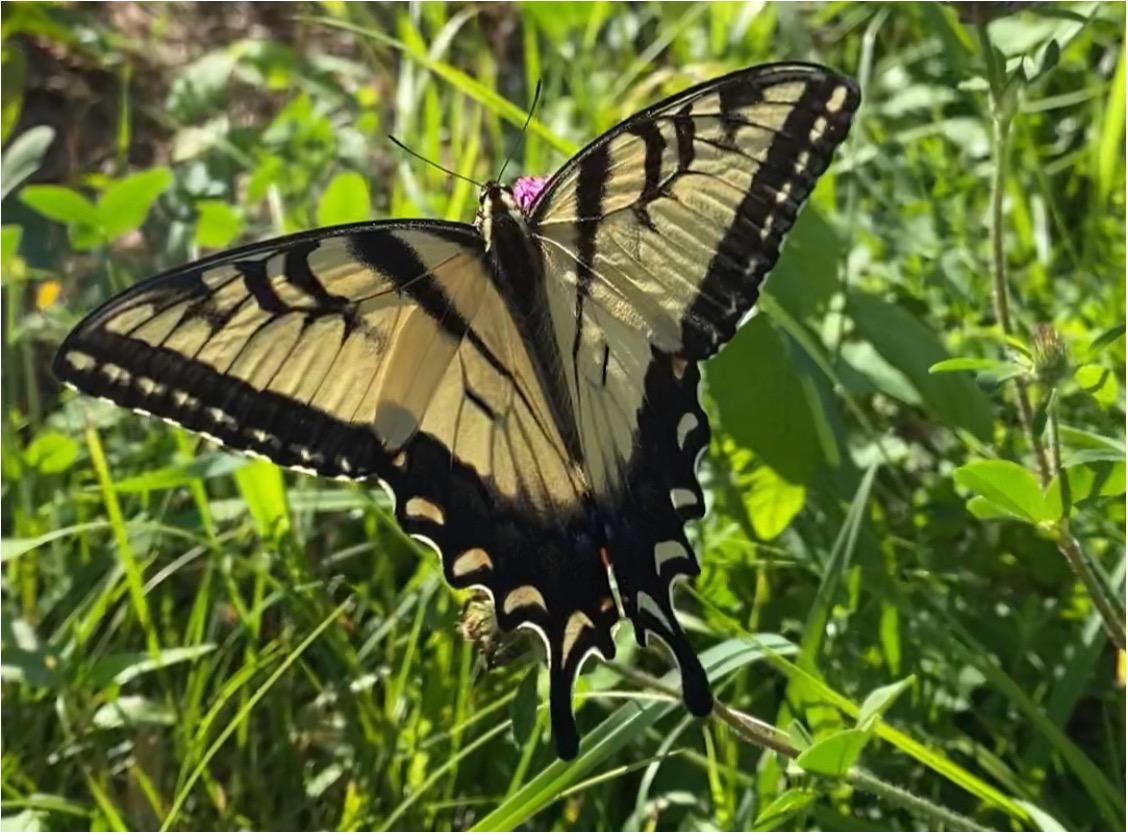Making Friends on the Trail: How to be Considerate of Wildlife

By far one of my favorite parts about being in nature is the wildlife. Whether I’m passing by a herd of deer grazing on the side of the trail, listening to the flute-like song of a woodthrush, or watching a beaver ferrying wood back and forth from its dam, I never cease to be fascinated by the diverse and charismatic species that we share the planet with. Over the years I have learned how to be more considerate of wildlife when I am out in the woods. Here are some tips on how you too can make sure you are being friendly to the animals you meet:
Keep a respectful distance.
Seeing wildlife while out and about is always exciting, and while it may be tempting to get as close as possible (especially when taking pictures), this generally isn’t a great idea. Many animals are easily disturbed and getting too close can cause them excessive amounts of stress. Certain animals may become aggressive at an observer who comes too close, like nesting raptors, a mother bear with her cubs, or a bull moose during mating season. For these reasons, it is best to keep a respectful distance between you and the animals you find in the wild. The National Park Service recommends a minimum distance of 25 yards from most wildlife, which can be quickly estimated using the rule of thumb: if you can cover the entire animal with your thumb with your arm fully extended, the animal is at least 25 yards away in most cases. Sometimes it’s hard to maintain this distance as many animals forage close to the trail where you are walking, but it’s good to use this “rule of thumb” when possible. Certain species will give you specific signals if you are too close, for example, deer will stomp one of their front hooves against the ground, beaver will slap their tails against the water, and many birds will give a loud and frantic alarm call. Being able to recognize and understand these signals is crucial to being more considerate of wildlife when you are out exploring nature.
But Still Take a Good Photo.
When taking photos of wildlife, it is a good idea to use a telephoto lens if possible as this will allow you to maximize the distance between yourself and the animal and minimize the disturbance you cause it (the picture of the osprey nest above was taken using a camera with a telephoto lens). A good camera and lens can be expensive, so one alternative you can try is taking pictures with your phone camera through one lens of a pair of binoculars (the binoculars act as a sort of makeshift telephoto lens). I do this often when I see something interesting that I want to take a picture of and have a pair of binoculars handy. This method won’t give you the same quality of photo as using an actual long-range lens on a camera, but with some practice you can get some decent photos. Here is an example of a picture I took using this method.

Try not to handle amphibians (or at least not with bare hands).
Throughout my childhood I would spend countless hours trying to find and catch frogs and salamanders in the woods with my bare hands. As fun as this is to do, it can cause lots of stress and harm to amphibians. Frogs and salamanders have very sensitive mucous membranes on their skin, and when you pick them up any oils, salt, soap, lotion, or bug spray on your hands will disrupt this membrane and be absorbed into their skin. Using nitrile gloves is the best way to pick up amphibians as they cause minimal irritation to an amphibian’s sensitive skin, but chances are you won’t have them with you when on a casual stroll through the woods. If you don’t have these gloves, rubbing a layer of mud on your hands before picking up the amphibian can create a moist surface that keeps it from touching any oils or other irritating substances on your bare skin.
Don’t feed the wildlife.
As much as you may want to share some of your trail mix with the inquisitive gray jay you met at the top of the mountain, it’s best not to. Most animals eat specific foods that they find in the wild that give them all the nutrients they need and our food that we get from the supermarket usually lacks these nutrients. If an animal is fed by humans too much, they may become completely dependent upon nutritionally inferior handouts and stop eating the food they need to survive. This ultimately alters their natural foraging behavior while depriving them of the nutrients they require. Feeding wildlife can also increase the chances of human-animal conflict in some cases, as animals may lose their fear of humans from frequent feeding and instead start to see them as them as a main food source.
Get involved.
One of the best ways to be considerate of the wildlife you love is to be actively involved in work that helps them and their habitat. For example, if you really love butterflies, planting a native pollinator garden or volunteering to help maintain a local one is a great way to help them out. Removing invasive plant species from your backyard or volunteering to pull invasives at a nearby location is also another great way to improve habitat for native wildlife. Getting involved in citizen science programs like The Great Backyard Bird Count run by the Cornell Lab of Ornithology and Audubon Society is another very accessible way to be caring and considerate for wildlife.


